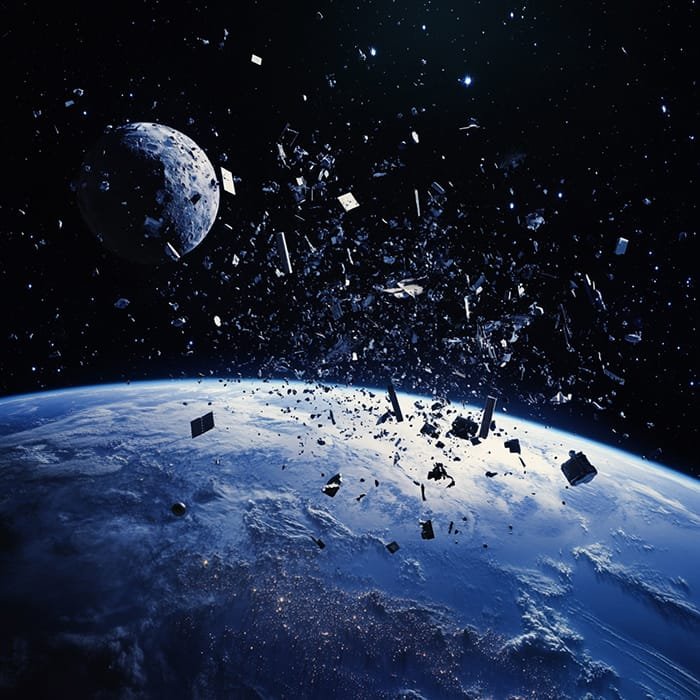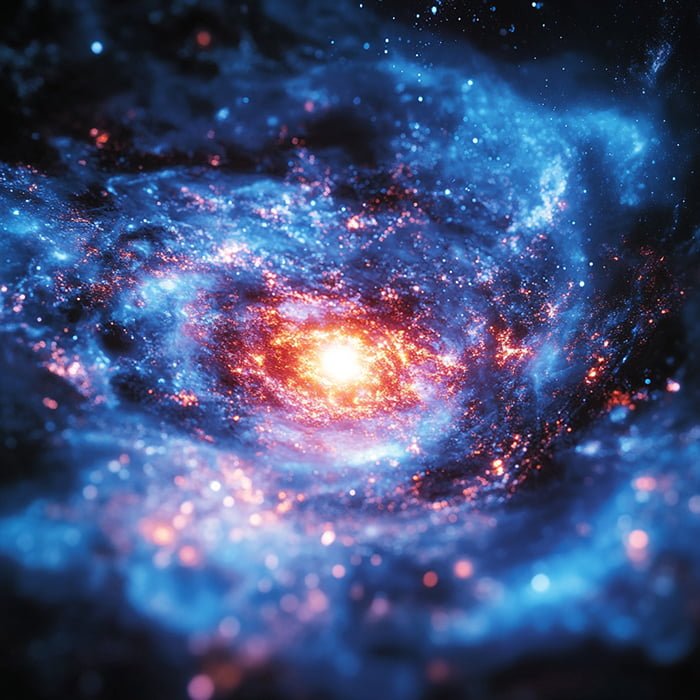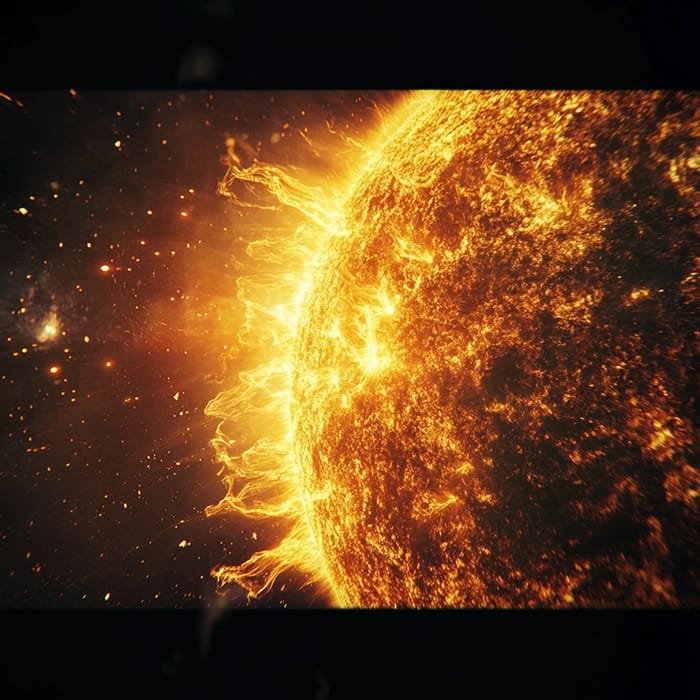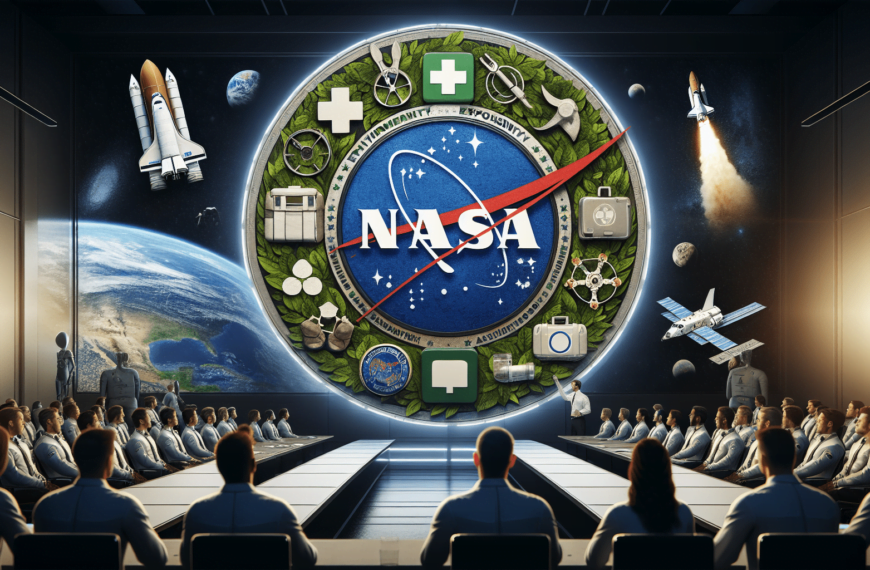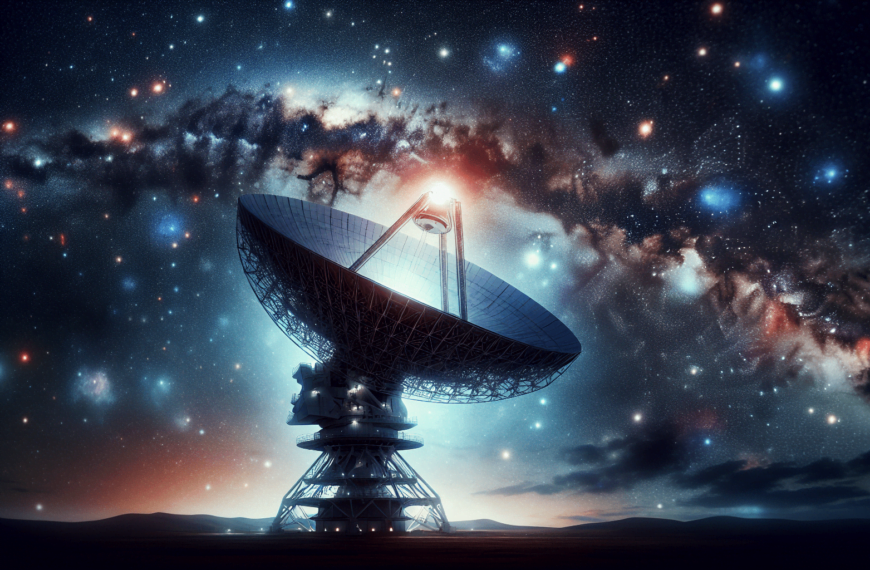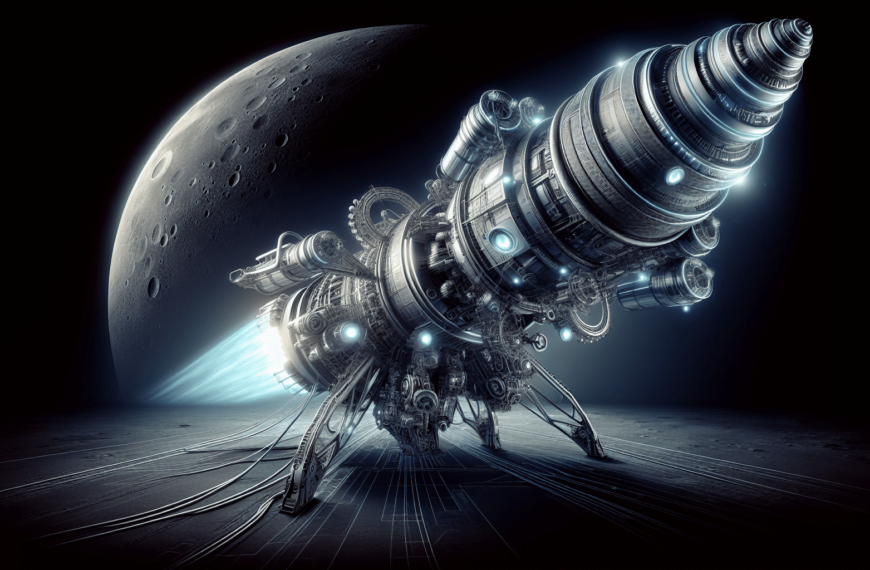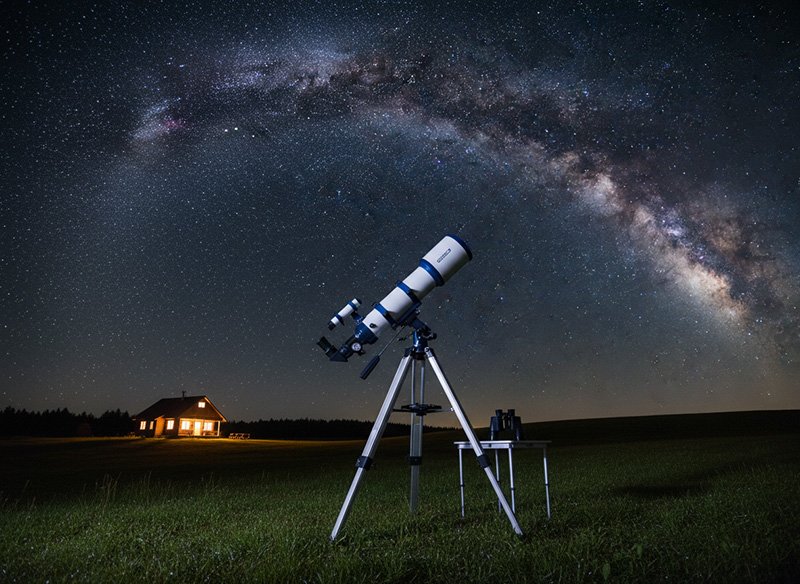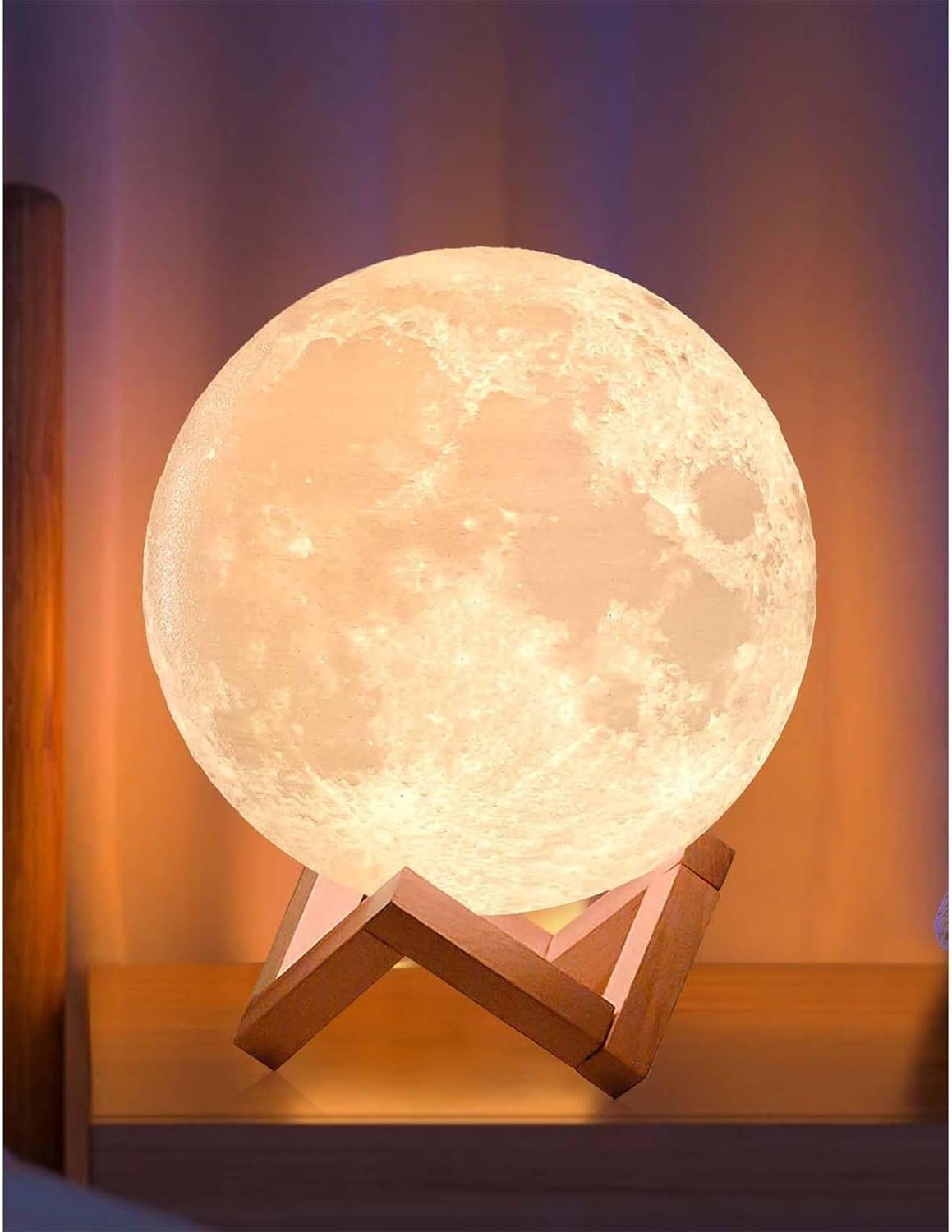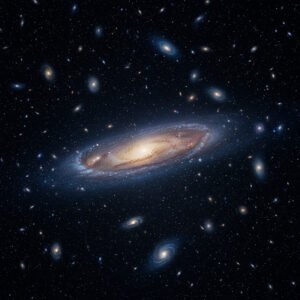Cislunar space faces a growing debris threat due to increased lunar missions. Researchers highlight the chaotic dynamics and call for proactive debris mitigation.
Key Takeaways 📝
- The increase in lunar missions is creating a debris threat in cislunar space, with researchers warning that even small fragmentation events could have disastrous consequences.
- A recent study reveals that the chaotic dynamics of the Earth-Moon-Sun system complicate predictions of debris behavior, making it difficult to manage risks effectively.
- The researchers advocate for a proactive approach to debris mitigation, suggesting that waiting for a crisis—like in near-Earth space—could lead to catastrophic outcomes.
- Understanding the potential for debris interactions between cislunar space and near-Earth missions is crucial for future space endeavors.
- The core message emphasizes the urgent need for comprehensive modeling and proactive strategies to safeguard ongoing and future lunar exploration efforts.
As humanity’s presence in space continues to expand, with ambitious lunar exploration programs and increased commercial activity in the cislunar domain, a pressing concern has emerged: the growing threat of space debris in the region between the Earth and the Moon. University researchers have recently sounded the alarm, highlighting the potential catastrophic consequences of even a single fragmentation event in this critical area of space.
The Cislunar Conundrum: A Debris Minefield in the Making
The cislunar space, the region between the Earth and the Moon, is rapidly becoming a crowded domain. With the ongoing and planned missions to the lunar surface by various space agencies and private companies, the amount of hardware and spacecraft orbiting the Moon is steadily increasing. This includes not only active missions but also discarded and defunct hardware, which can potentially break apart and generate a significant amount of debris.
Unlike the Earth’s lower orbit, where natural atmospheric drag helps to clear away some of the orbital debris, the airless environment of the Moon provides no such natural cleaning mechanism. Any fragments generated in the cislunar space are bound to the lunar gravity, remaining in orbit and posing a threat to future missions.
The Chaotic Nature of Cislunar Dynamics
Researchers from Purdue University, Arly Black and Carolin Frueh, have examined the complex dynamics of the cislunar environment, highlighting the challenges in accurately modeling and predicting the behavior of space debris in this region. The team’s research, recently published in the Advances in Space Research journal, reveals that the chaotic nature of the three-body system (Earth-Moon-Sun) makes it much more difficult to forecast the trajectory and interactions of debris fragments compared to the relatively simpler two-body problem in near-Earth space.
“Given the chaotic nature of the system dynamics in the region, nearby orbits in certain cases may exhibit entirely different behavior,” the researchers explain in their paper. This unpredictability poses a significant challenge in developing effective mitigation strategies and understanding the potential consequences of a debris-generating event.
The Cascade Effect: Rippling Consequences of a Fragmentation Event
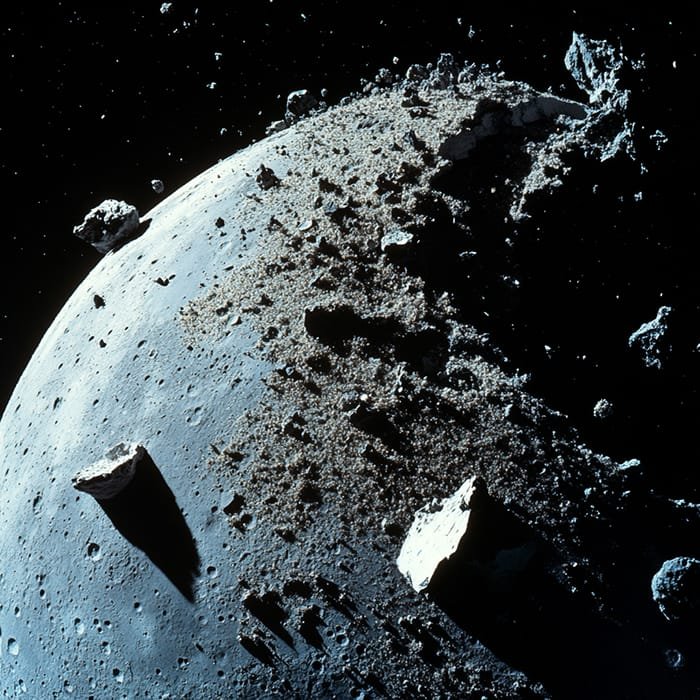
The researchers emphasize that even a single fragmentation event in the cislunar domain could have far-reaching and calamitous consequences. The fragments generated could not only impact the Moon itself but also flow back and potentially interact with active satellites and missions in near-Earth space.
Some fragments continue to travel and cross the region between the Earth and the Moon, posing a hazard to active space missions in that region,” observed Frueh.
Furthermore, the researchers point to the potential for debris to eventually leave the Earth-Moon system altogether, only to return decades later as a threat to future space activities. The example of the discarded ascent stage of the Apollo 10 lunar module, nicknamed “Snoopy,” which was later spotted as an Earth-crossing object, serves as a cautionary tale.
The Need for Proactive Measures and Comprehensive Modeling
The university researchers emphasize the urgency of addressing the cislunar debris issue before a catastrophic fragmentation event occurs. They call for a proactive approach to cislunar debris analysis, aiming to understand the potential consequences and identify areas for mitigation before the problem becomes unmanageable.
“Given the renewed fervor of lunar exploration, the cislunar population is expected to increase significantly in the coming years,” Black said. “And we’ve learned that waiting until a critical capacity is reached to address the issues surrounding debris, as in the case of near-Earth space, is not an option.”
To this end, the researchers stress the need for comprehensive modeling and simulation of spacecraft breakups in the cislunar environment, taking into account the complex dynamics of the three-body system and various forces at play. This knowledge will be crucial in developing effective space situational awareness and debris mitigation strategies for the cislunar domain.
A Race Against Time to Secure the Lunar Future
As the exploration of the Moon and the development of cislunar activities accelerate, the threat of space debris in this critical region cannot be ignored. The warnings from university researchers underscore the urgency of addressing this issue before it becomes a catastrophic reality.
By proactively modeling and understanding the behavior of debris in the cislunar environment, space agencies and private companies can work towards developing effective mitigation strategies and safeguarding the future of lunar exploration and beyond. The race is on to secure the lunar domain and ensure that humanity’s ambitions in space are not derailed by the growing menace of space debris.

